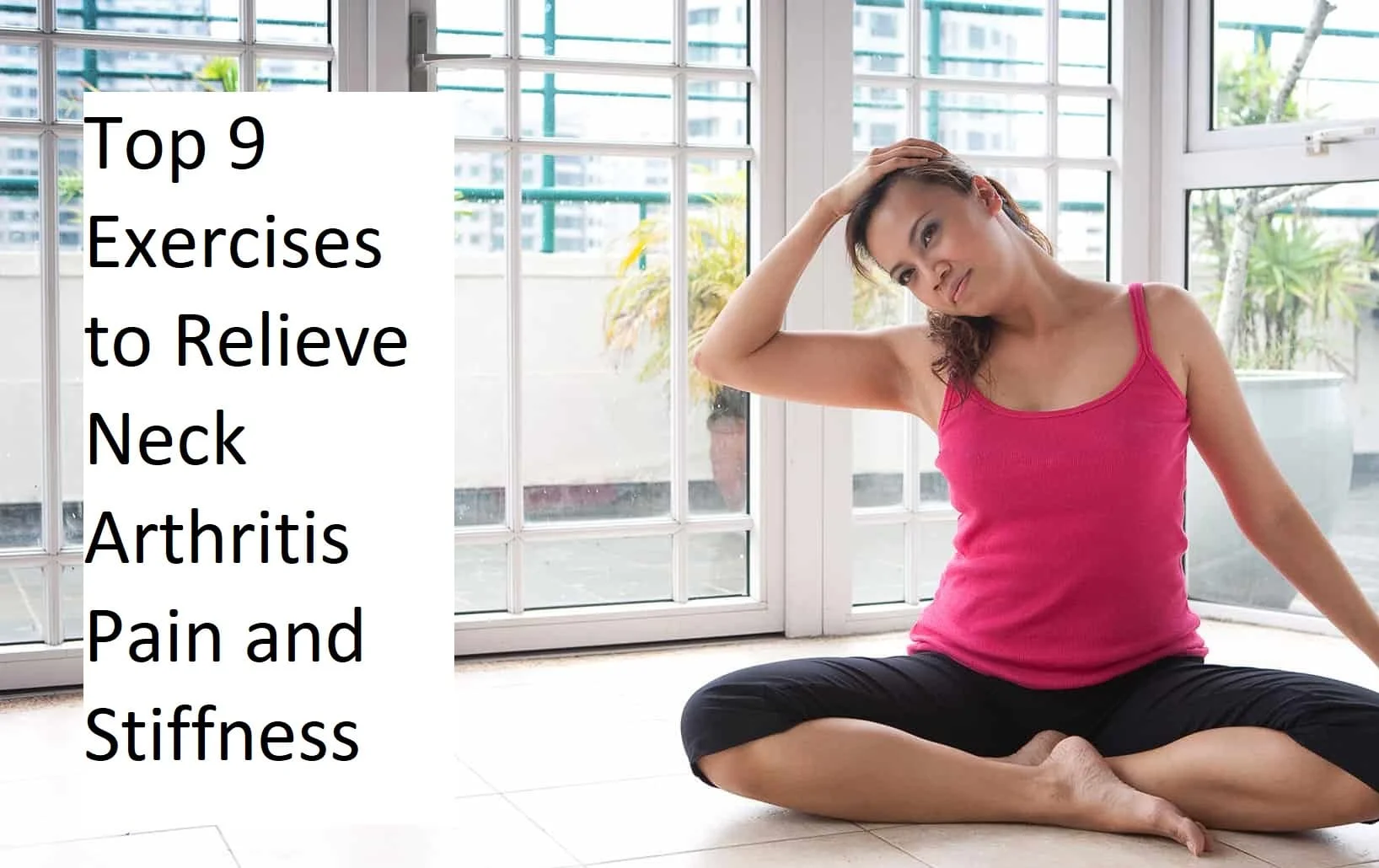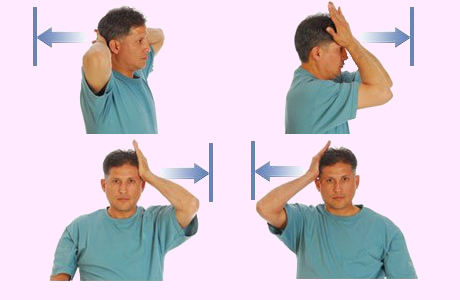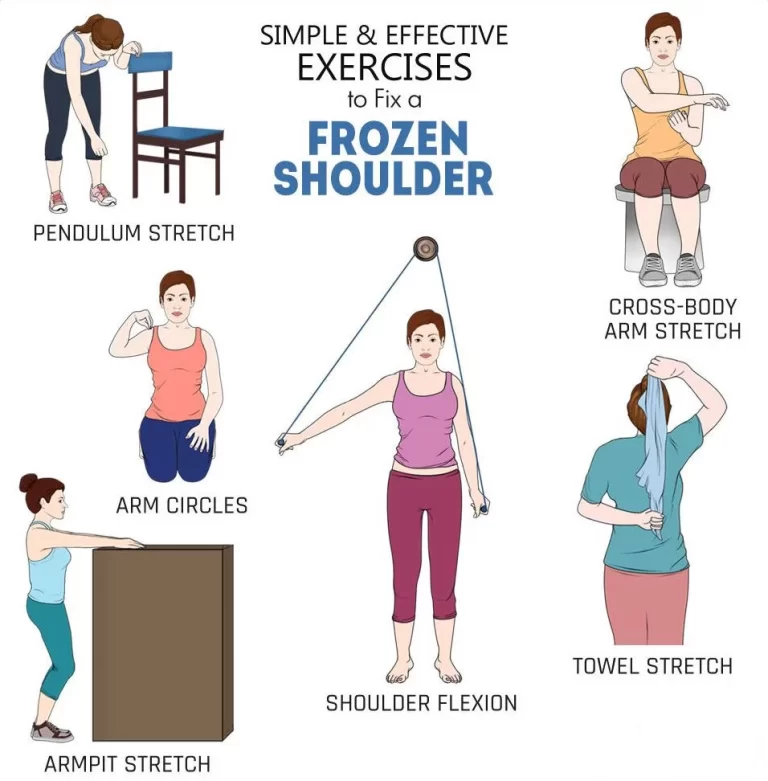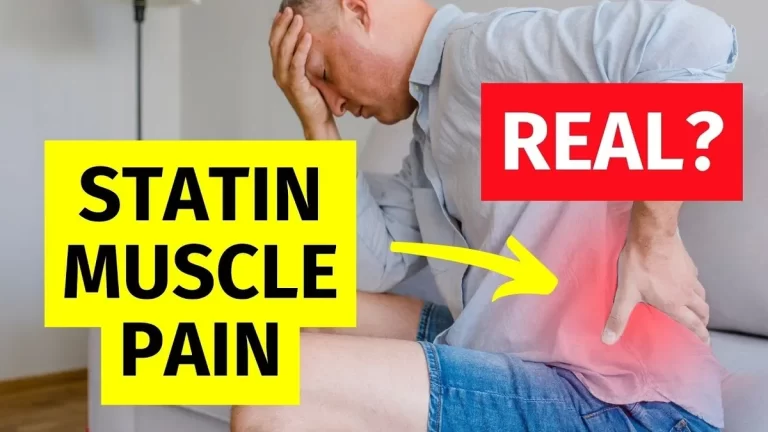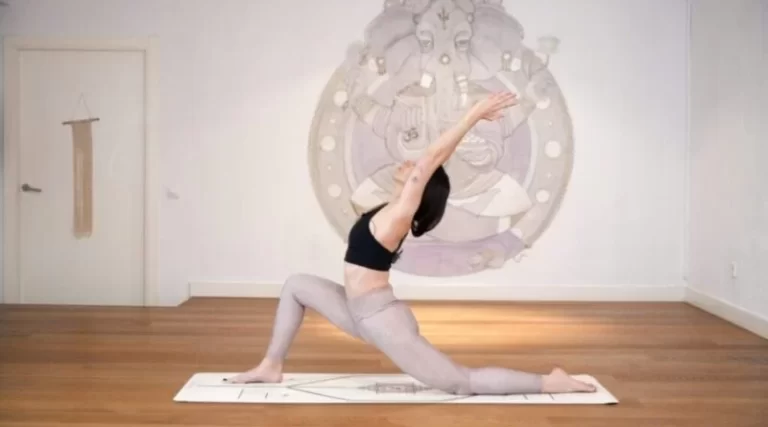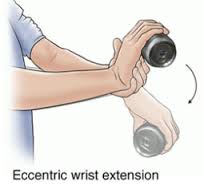Top 9 Exercises to Relieve Neck Arthritis Pain and Stiffness
Introduction
Neck arthritis, also known as cervical spondylosis or cervical osteoarthritis, is a common condition that occurs with age and can lead to neck pain, stiffness, and reduced mobility.
It is characterized by the degeneration of the discs and joints in the cervical spine, which can cause discomfort and limitations in daily activities. Fortunately, there are various exercises that can help manage the symptoms and improve the strength and flexibility of the neck.
These exercises should be performed under the guidance of a healthcare professional and should be tailored to individual needs and capabilities.
In this guide, we will explore a range of exercises for neck arthritis to promote better neck health and overall well-being.
What is a Neck Arthritis?
The cervical spine’s vertebrae, discs, and ligaments deteriorate as a result of neck arthritis, commonly referred to as cervical spondylosis. A person can regulate their pain and prevent their symptoms from growing worse by employing a number of different approaches.
Cervical spondylosis is often referred to as neck arthritis, cervical arthritis, and degenerative osteoarthritis. The cervical spine is the top segment of the spine that makes up the neck. The cervical area of the spine is made up of seven bones, or vertebrae. They begin at the skull’s base.
In cervical spondylosis, osteophytes, or bone spurs, commonly develop on the edges of the vertebrae. The likelihood of symptoms rises when the discs get thinner and lose their capacity to absorb stress. There are often no signs of cervical spondylosis. When symptoms do appear, they often fade away over time and are frequently addressed without surgery. In some cases, a doctor could recommend surgery.
Causes
The main cause of cervical arthritis is osteoarthritis. When the cartilage that supports the joints deteriorates, osteoarthritis develops. The cartilage’s deterioration is mostly to blame for this.
According to research, the following risk factors may exacerbate the harmful effects of wear and tear:
- Genetics
- Lifestyle
- Environmental influences on genes are referred to as epigenetics.
- Ethnicity
- Sex
However, aging is by far the biggest risk factor for osteoarthritis. The cervical spine can be impacted by other kinds of arthritis, such as rheumatoid arthritis (RA), however, this is less often.
Symptoms
Cervical spondylosis patients might not always feel any symptoms.
Almost everyone has neck pain. However, there is a chance that the soreness will spread, sometimes to the head or shoulders.
Additional indications of cervical spondylosis include the following:
- Swelling
- Neck stiffness
- Muscle spasms
- Headache
- Issues and struggles with balance walking rigidly changing one’s posture, or experiencing a popping feeling while moving one’s neck
- Dexterity may be lacking, and the arms and legs may weaken.
The blood arteries may occasionally get compressed as a result of these alterations. This may impact the blood flow to the brain and cause dizziness or even blackouts.
Diagnosis
Symptoms, age, and risk factors are frequently used by doctors to make the diagnosis of arthritis.
The illness can be diagnosed using a variety of tests. These consist of:
Physical examination
A doctor will do a physical examination following a discussion of medical history and general health. They assess the following:
- Touch sensation
- The way a person walks (gait) and posture
- Flexibility in the neck and arms
- Reflexes
- Strength in the arms and hands
Imaging scans
Diagnosis may involve:
- X-ray: This can show whether the spine has been physically harmed and whether bone spurs are present.
- MRI scans can produce pictures of the spinal cord, muscles, and nerves. They may be helpful in figuring out whether certain symptoms are linked to soft tissue injury.
- A colored dye is injected into the spinal canal during a myelogram to more clearly identify particular features, such as nerve roots. After introducing the dye, a medical expert will do a CT scan.
- Compared to X-rays, CT scans can provide a more thorough evaluation of the bone anatomy of the cervical spine.
- These tests—electromyography and nerve conduction studies—evaluate the functioning of particular muscles and nerves.
Blood work
- In order to rule out infectious arthritis and other probable causes of joint pain, a doctor can sometimes additionally advise blood tests.
Exercise for Managing Symptoms
When you reach “that age,” you may be searching for the exit that will allow you to completely avoid this kind of situation. Most likely, there is no such thing as a miracle button, therefore your best chance would be to exercise, particularly range of motion exercises.
And if you’re a senior citizen, your doctor may (often) have strongly advised you to exercise frequently to treat joint stiffness and painful sensations.
Why?
The first line of defense in avoiding spine arthritis and slowing its progression in the beginning stages is movement. It’s an excellent method for preventing your pain as well.
While neck strengthening activities are essential for controlling the symptoms of neck arthritis, flexibility and range of motion are also very significant.
Exercise for Neck Arthritis
Neck drop and raise
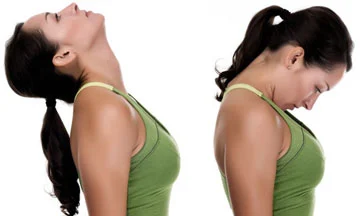
The front and back of your neck are stretched to improve flexibility and range of motion:
- Either sit in a chair or stand tall. Drop your head forward gradually until your chin rests on your chest.
- For five to ten seconds, keep this position. then return to your starting point.
- Next, tilt your head back a little and stay there for 5 to 10 seconds.
- Five times in each direction should be stretched.
- Please be aware that tipping your head slightly back may make your symptoms worse if you have OA in your neck, also known as spondylosis.
Please discontinue this activity if this is the case for you. Nevertheless, if it doesn’t affect you, keep moving to keep your mobility.
Chin to chest
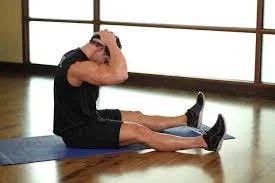
- Straighten your shoulders and spine while standing or sitting up straight in a chair.
- Leaning the head back slowly will allow the chin to rest on the shoulder.
- Tend your neck muscles slightly.
- Hold for 5–10 seconds, then release and switch to the opposite side.
- Do this 2-4 times.
Head tilt
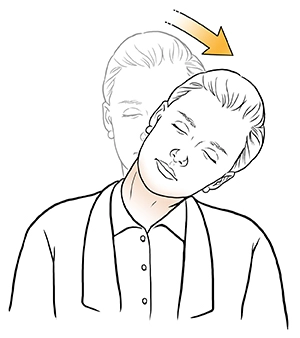
The sides of your neck are exercised by this opposing motion:
- Take a Sitting Position on a chair or stand up straight.
- Keep your left shoulder down and slowly incline your head towards your right shoulder. To increase the stretch, it might occasionally be helpful to grab onto the base of your chair with your left hand.
- After holding this posture for 5 to 10 seconds, bring your head back to the middle.
- Tilt your head towards your left shoulder and repeat on the other side, keeping your right shoulder down.
- For five to ten seconds, keep this position still.
- Five times through this entire process.
Neck rotation
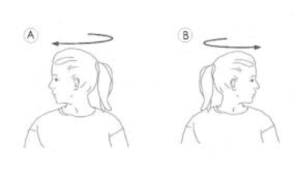
Another effective neck-side workout is as follows:
- Sit down on a chair or stand straight.
- Keep your chin straight and slowly move your head to the right.
- Hold this posture for five to ten seconds before coming back to the center.
- Turn your head slowly to the left and hold the position for 5 to 10 seconds.
- Then return to the center.
- Repeat 5 times on each side.
Neck retraction
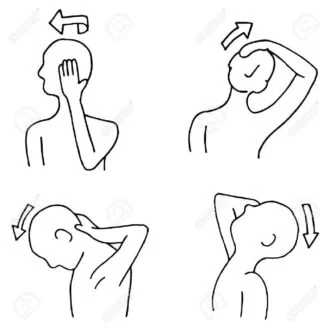
This stretch should be noticed at the back of your neck:
- Place your head straight, shoulders back, and in a chair. As if creating a double chin, pull your chin straight in.
- Feel the strain in your neck as you hold this position for 5 to 10 seconds.
- Go back to your starting place.
- Do 5 Repetitions.
Shoulder rolls
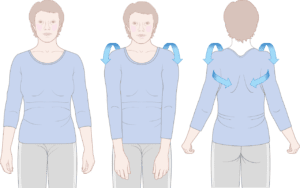
Don’t forget about your shoulders while you concentrate on your neck. The muscles that support your neck will get stronger as you exercise your shoulders.
To maintain your neck and shoulder joints flexible, perform shoulder rolls:
- With your feet shoulder-width apart, either stand or sit down.
- In a single fluent action, roll your shoulders up, back, and down.
- Do this motion five times.
- Roll your shoulders up, forward, and down five times, then reverse the action.
Reps for necks
You might only be able to complete one or two repetitions of each exercise at first. You should be able to raise the amount of reps as you become more used to the exercises.
When you initially begin a new activity, you could experience some minor discomfort, but you shouldn’t ever experience agony. Stop moving immediately and consult a physician or physical therapist if it aches.
For six to eight weeks, do these exercises daily. Call your doctor for guidance if your discomfort won’t go away, grows worse, or if you notice any weakness in your hands or arms.
Isometric motion
In addition to the cervical retraction exercise, isometric activity is required for neck muscular strengthening. A static muscular contraction is an isometric contraction. In other words, there is no apparent movement caused by this sort of contraction. When you hold a shopping bag with your elbow bent but don’t move your arm or move the bag, you experience an isometric contraction in your bicep muscles (front of the upper arm).
The most common kind of therapy for neck arthritis symptoms is an isometric exercise. Both therapists often start their patients with moderate resistance (using less pressure than the maximum—roughly 50% less pressure).
Isometric Neck Flexion and Extension Strengthening
When you bend your head forward, you experience cervical (meaning neck) flexion, and when you bend your head back, you experience cervical extension. The flexion and extension motions we’re seeking happen in the neck, despite the fact that you focus on moving your head during the exercise. The flexors (muscles at the front of the neck) and extensors (muscles at the rear of the neck) are the muscles that suffer damage by this workout.
Stand or sit. Place one hand’s palm against your forehead and gradually push it away while keeping your head still. In other words, your head will be forced back into your hand as your hand presses into your forehead. Hold for five counts.
Similar to the previous exercises, Rajter advises performing 20 to 30 of them, however, you can vary the number of sets and reps. Continue by placing your hand on the back of your head, pushing it forward, and bringing your head back into your hand.
Exercises to avoid
It might also be useful to be aware of which motions can aggravate stiffness before exercising. There isn’t a lot of solid scientific data available right now to identify a few certain workouts that help with neck pain or make it worse.
A combination of manual treatment, strength training, stretches, and movement retraining is recommended as best practice. However, it is thought that one of the greatest ways to cure persistent neck discomfort is through exercise.
Keep an eye out for any unpleasant feelings as you locate the fitness programme that works best for your body. You may then determine what works and what doesn’t.
To prevent an arthritic flare-up, be aware of these motions both when exercising and during your regular activities:
Intense trap exercises
A significant muscle group called the trapezius runs from the neck, shoulders, and middle back. Overusing the upper trapezius muscles, which are located to the sides of your neck, frequently makes neck discomfort brought on by OA worse.
The upper trapezius muscles can get overworked and lead to neck pain and bad posture if you perform a lot of weighted shoulder shrugs or repeatedly raise weights over your head with poor technique.
Forward-leaning exercises
Exercises like cycling that regularly force the neck muscles forward need to be done with care.
In a 2019 survey with over 700 bikers, neck pain was the body component with the most self-reported discomfort when cycling. Cycling experience was taken into account in the study, and those cyclists who had more experience complained of fewer problems than those who had less experience.
Consider your posture and the intensity of the workout if you are someone who is treating neck arthritis.
Phone and Internet posture
When using a computer, extending your chin forward or constantly glancing down at your phone may aggravate neck pain, especially in those who have been diagnosed with neck arthritis.
Our digital culture doesn’t always help our posture, which is why it’s so essential to use technology carefully while employing armrests and back support.
In a short research published in 2018, individuals who held their phones at eye level and used additional neck, shoulder, and back support had fewer indicators of physical stress than those who did not. This was in contrast to study participants who did not use any chair support.
The neck and shoulder muscles are also stressed out by physically demanding occupations and those that involve working on computers for long periods of time.
Keep in mind to take regular breaks to carry out the aforementioned workouts whenever you can.
Sleep
If you have neck arthritis, be aware that using the wrong pillow or arranging it incorrectly might cause problems with your neck and spine.
According to a 2020 study, pain in the neck is related to almost 70% of all sleeping difficulties.
Try sleeping on your side with a pillow level with the natural curve of your neck to prevent sleeping at an uncomfortable position.
Surgical treatments
If myelopathy or radiculopathy-related symptoms worsen, a doctor could advise surgery.
Compression of the spinal cord causes myelopathy, while compression of the root nerve causes radiculopathy.
Various types of cervical arthritis may benefit from various surgeries, including:
- Herniated discs are removed through discectomy.
- When a person’s weight affects their arthritis, bariatric surgery may be necessary. Spinal fusion relieves strain on the spinal cord and root joints.
Mixed results have been found in studies on the advantages of surgery. Because of this, medical specialists suggest weighing the advantages and disadvantages of surgery and exploring other therapies first.
Summary
If your neck is painful, consult a physician to determine the precise source of your ache. You can consult a specialist such as an orthopedist, rheumatologist, physical therapist, or osteopathic physician, or you can go to your family doctor.
Your doctor can also provide you with advice on pain-relieving techniques like posture adjustments, yoga, or Pilates. Additionally, they could suggest steroid injections or painkiller medications.
A doctor may recommend medicine, physical therapy, or other therapies, such as surgery if self-care is ineffective. Making certain lifestyle adjustments, such as regulating your weight or, if appropriate, giving up smoking, can also be helpful.
Cervical arthritis has no known therapy, however, the appropriate approach can significantly lessen or even get rid of symptoms.
FAQs
Can exercise help arthritis in the neck?
Arthritic neck? These Exercises Should Be Avoided
Pain from arthritis can be reduced by stretching the neck’s muscles and doing strengthening exercises to offer stability and support.
How can I reduce arthritis in my neck?
Physical therapy: Therapists guide patients through activities to strengthen their necks and improve posture. Ibuprofen and naproxen, two painkillers, reduce inflammation and ease pain. Warm baths – These are great for easing sore joints and strained muscles.
How may neck arthritis be treated without medication?
Home Treatments for Neck Arthritis
taking a warm shower.
use a hot, moist hydrocollator pack.
using neck-warming compresses.
using a heating pad that is electric.
How should I sleep with neck arthritis?
In the side
Side sleepers should maintain their head and neck in line with the rest of their body to assist minimise stiffness in the neck muscles. This alignment helps stop weight gain. from being put on the neck and resulting in pain.
Should you massage your arthritic neck?
And those who have arthritis are all too familiar with the ache that can result from just nodding yes or no. However, daily self-massage combined with routine massages from a therapist can lessen arthritis-related neck discomfort.
How does neck arthritis start?
Over time, bony spurs or rough areas that grow on the surfaces of the bone and cause issues with ligaments and discs may lead to neck arthritis. The spinal canal may become compressed, placing pressure on the spinal cord and arm nerves. Pressure on the spinal cord can result from injuries as well.
References
- Neck Workouts for Arthritis. Healthline. https://www.healthline.com/health/osteoarthritis/neck-exercises#neck-drop-and-raise
- How to Strengthen Your Neck Muscles for Arthritis. Verywell Health. https://www.verywellhealth.com/strengthen-your-neck-muscles
- How to Strengthen Your Neck Muscles for Arthritis. Verywell Health. https://www.verywellhealth.com/strengthen-your-neck-muscles

